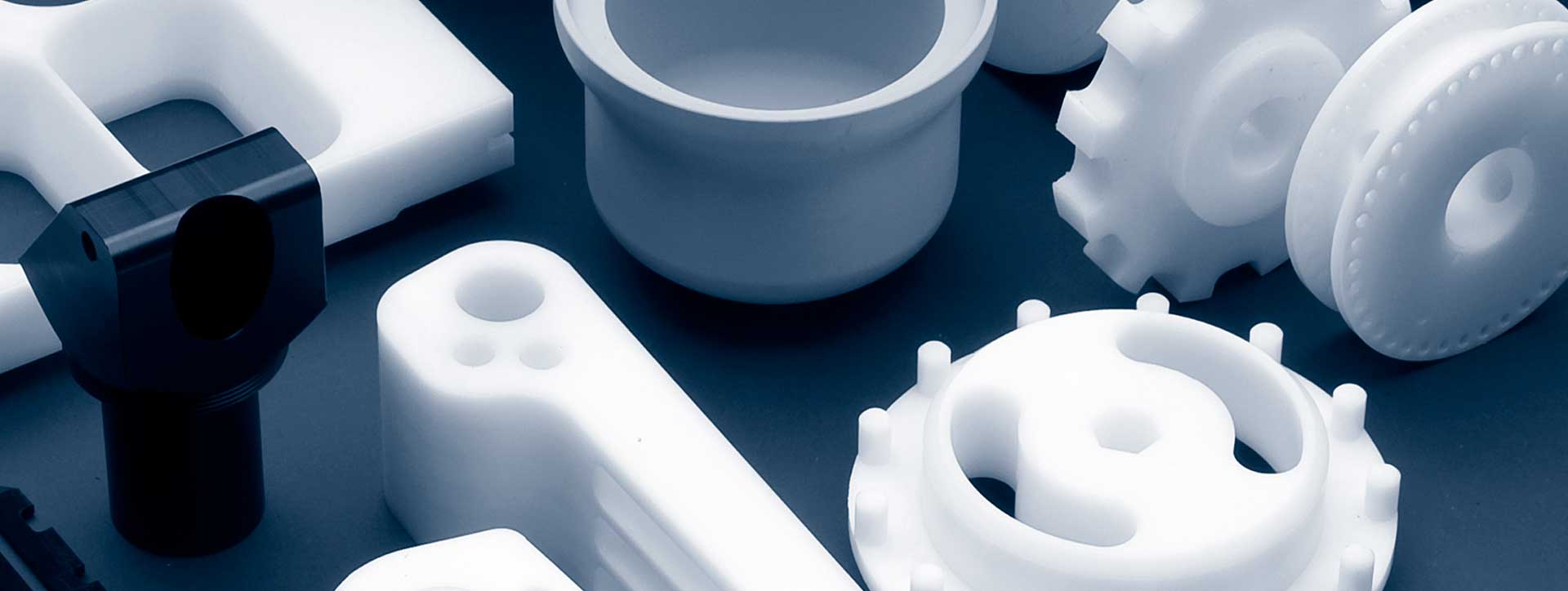
PE 300 | PE HD
Available formats: Bars, Tubes, and Plates
PE300 polyethylene known as HDPE is a lightweight and resistant engineering plastic with high impact resistance. It also has excellent chemical resistance with very low moisture absorption. The HDPE can also be manufactured and welded.
Polyethylene (PE) is chemically the simplest polymer and is represented by its repetitive unit (CH2-CH2) n. It is one of the most common plastics due to its low price and simplicity in its manufacture, which generates an annual production of approximately 80 million tons worldwide. It is chemically inert and is obtained from the polymerization of ethylene, from which its name derives.
This polymer can be produced by different polymerization reactions, such as: Free radical polymerization, anionic polymerization, ion coordination polymerization or cationic polymerization. Each of these reaction mechanisms produces a different type of polyethylene.
Applications
PE 300 (PEHD) is used, within the chemical and food industries, food molds, containers, containers and the like.
Chemical equipment and container manufacturing, bottling industry, water treatment tanks, well construction, countless applications in the water sector.
- Tubs
- Gears
- Chain controls
- Containers
- Use strips
- Cutting mats
- Clothes for sliding movements.
It has high chemical resistance: oils, acetates, boric acid, citric acid, sulfuric acid, alcohols, ammonia, sodium disulfide, carbonate, chloride, carbon dioxide, fluoride, gasoline, sodium nitrate, ammonium sulfate, phosphorus trichloride and A long list of chemical agents.
Low chemical resistance: Aqua regia, liquid bromine, liquid chlorine, tetrabroethane, carbon tetrachloride, trichlorethylene, sulfuric trioxide.
Physical Properties
| Physical Properties | Rule | Units | Values |
|---|---|---|---|
| Specific weight | ISO 1183 | g / cm3 | 0,95 |
| Water absorption upon saturation | ISO 62 | % | 0,2 |
| Moisture absorption at 23 ° C? 50% RH | ISO 62 | % | 0,01 |
| Upper limit of working temperature | - | ºC | 80 |
| Lower limit of working temperature | - | ºC | -30 |
Mechanical properties
| Mechanical properties | Rule | Units | Values |
|---|---|---|---|
| Elastic limit (2) | ISO 527 | MPa | 23 |
| Elongation in performance (2) | ISO 527 | % | 10 |
| Tensile strength until breakage (2) | ISO 527 | MPa | - |
| Elongation to breakage (2) | ISO 527 | % | > 50 |
| Traction Module (2) | ISO 527 | MPa | 1300 |
| Impact resistance without notches | ISO 179 | KJ / m2 | NB |
| Notched Impact Resistance | ISO 179 | KJ / m2 | 105 |
| Rockwell hardness M | ISO 2039-2 | - | - |
| Shore D hardness | DIN 53505 | ° Shore D | 66 |
| Flexural strength - at 3.5% | ISO 178 | MPa | - |
| Flex module | ISO 178 | MPa | - |
| Compressive tension (1% voltage-23 ° C) | ISO 604 | MPa | 9 |
| Compression module | ISO 604 | MPa | - |
| Deformation under load 100 Mpa-24 hr- RT | - | % | - |
| Poisson relationship | Abs | - | 0,42 |
(1) For a tension-free resistance of 5000 h: approximate reduction of the value in 1000 hours to 50% of the tensile strength. (2) Stabilized in air at 50% relative humidity. (*) Drying / stabilizing in the atmosphere 50% HR -23 ° C. (**) Stabilizing in the atmosphere 50% HR -23 ° C. (***) Resistance to UV exposure is achieved with pigmentation or specific additive. (****) Bonding and painting are possible after a special surface treatment. The data shown in this table have been determined in our laboratories and should only be considered as a useful reference; They did not commit for us in the different forms of application. As a result of our technological experience and our best knowledge, the data offers an initial evaluation of the polymer. This data cannot be applied to finished parts as obtained under specific conditions and is only an average value. Values should be considered a useful reference and are given without compromise.
Formats
- PE 300 bars
- PE 300 pipes
- PE 300 plates
Specialized Technical Advice
We have specialized staff with extensive experience in the sector for any specific advice they need.

